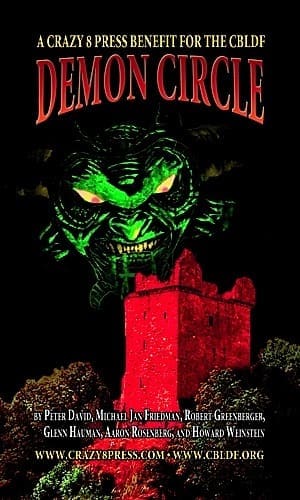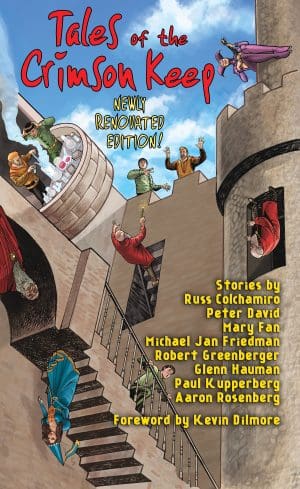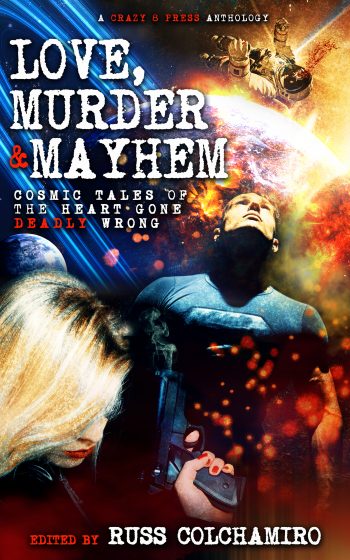
Stories change and grow and evolve over time. It’s one of the things that makes oral storytelling in particular so vibrant, that the core of the story may remain the same but the details and even the style and flow can change to reflect current attitudes and issues.
Prose fiction doesn’t adjust in the same way, of course. After all, once you write it down and especially once you publish it, it’s a fixed form. Unless you plan to emulate Walt Whitman, who continually updated and revised Leaves of Grass, that book is now set, as is the story within it.
But when you’re working on a series, there’s still room to play, to revise, to change course. Sometimes it’s because you realized something partway through, and other times because the world around you has changed—or you have—and you discover that the story you started out to tell isn’t the one you want to tell now.
When Steven Savile and I started Time of the Phoenix, back in 2009, we already knew that it would be a series following the immortal Phoenix, avatar of humanity’s creativity, throughout history. We bounced around ideas about various historical figures, came up with a rough timeline showing who the Phoenix had become and when, and then sketched out a set of five stories from that. We released the first one, “For This Is Hell,” in 2011. We were both happy with that first story, and it did well.
Time passed. Every so often I’d bring up the idea of returning to the Phoenix, but something always came up, some other project that needed to get done first—sometimes Steve’s, sometimes mine. More often it was his, and as the years piled on I started to feel that I might just have to continue the tale on my own. Steve was fine with that—relieved, even, because he felt bad about being the one more often delaying the project—and so with his blessing I sat down and wrote the second tale, “One Haunted Summer.” That came out in 2019.

I was happy with this one, too, and decided I’d continue the project by releasing one a year, each time in October, which happens to be my birth month. When better for a story that’s dark fantasy verging on horror?
But a funny thing happened when I went back to our notes about the rest of the story. I discovered I didn’t like them. I wasn’t happy with the projected next book. The one after that was still good, though it would need some twisting about—I still liked the basic premise, but with two already done I decided this one needed to be re-aligned to better match them. The final book, however, I absolutely hated. There were several reasons for that, some deeply rooted in what had gone on in this country during that intervening time, but others in the differences between Steven and myself. He’s much more of a horror writer than I am, and perfectly happy writing dark and depressing. I tend more toward the upbeat, with at least glimmers of hope. And with him no longer on the project, I wasn’t interested in having the tone get progressively darker, as we’d originally planned.
I noticed something else about the first two stories and the projected fourth one, too—each of them dealt with a different form of creativity involving words and writing. “For This Is Hell” was clearly centered on playwriting, while “One Haunted Summer” focused on prose and the fourth, “Death in Silents,” was all about the silent film industry. But the original third and fifth books had nothing to do with writing, or creativity, really. That just didn’t fit. It didn’t fit where I’d taken the story, and it didn’t fit the concept of the Phoenix in general.

So I ditched them both. After all, these were just initial notes, and I wasn’t beholden to anyone to stick to them. Instead I moved “Death in Silents” forward to Book Three, and figured out a new book four dealing with music and songwriting. I also came up with a way to close out the larger tale in that fourth book, removing the need for a fifth altogether.

I also went back and rebuilt the covers for Books One and Two. A friend of Steven’s, a really great illustrator named Vance Kelly, had graciously given us the image for “For This Is Hell,” but while striking I realized it didn’t say anything about the genre featured in that book. And the cover image I’d created for “One Haunted Summer” referred to the story location but also not to its genre, whereas the image for “Death in Silents” was a clear nod to silent film. Redoing those first two covers tied them more clearly into the series—I built the cover for the fourth book, “Cross the Road,” to emulate the dust jacket of a blues record from that era—and I then used each story’s cover as its frontispiece in the collected print edition, Time of the Phoenix.

I’m happy with how it’s all turned out. And I don’t view the original plan as a mistake, just as an initial draft on the idea. This tale has been a process—a long one, at times—and I’ve grown and evolved along the way. It makes sense, then, that the story would as well.

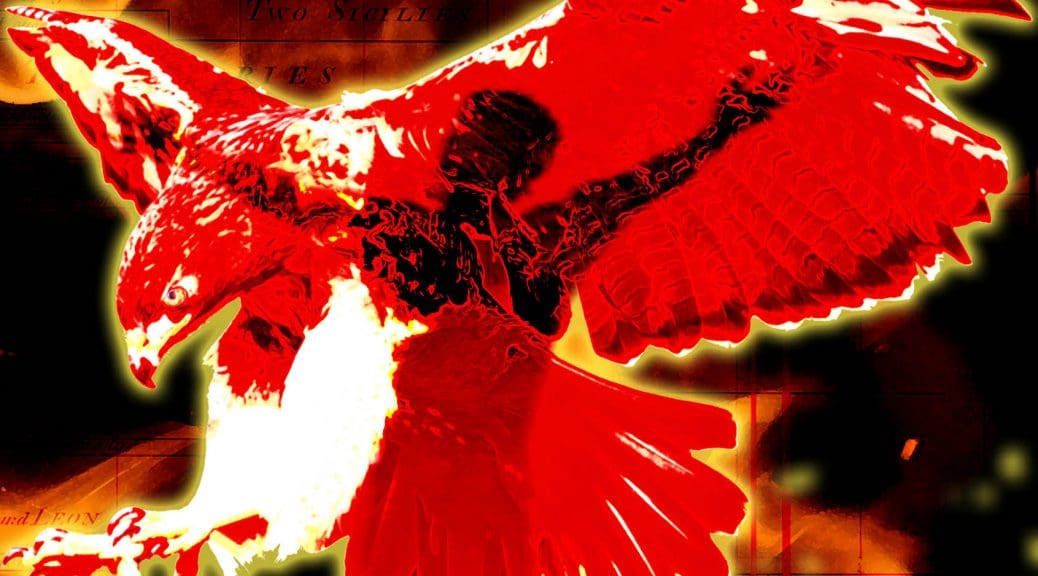
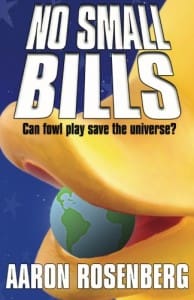 Aaron Rosenberg — a best-selling author and founding member of Crazy 8 Press — is back again with his latest scifi comedy novel in the Duckbob Spinowitz Adventures, Not for Small Minds.
Aaron Rosenberg — a best-selling author and founding member of Crazy 8 Press — is back again with his latest scifi comedy novel in the Duckbob Spinowitz Adventures, Not for Small Minds.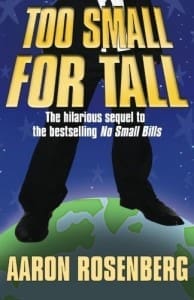
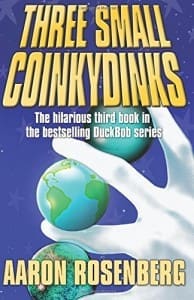 Q: The first three books in the series — No Small Bills, Too Small for Tall, and Three Small Coinkydinks — focused on Duckbob, Tall, and then Ned. Not for Small Minds puts Mary front and center. What was your biggest challenge — and your goal — for giving Mary center stage?
Q: The first three books in the series — No Small Bills, Too Small for Tall, and Three Small Coinkydinks — focused on Duckbob, Tall, and then Ned. Not for Small Minds puts Mary front and center. What was your biggest challenge — and your goal — for giving Mary center stage?
 A: You know, I love SF comedy. I have since I was a kid. I remember reading Ron Goulart’s Calling Dr. Patchwork and Harry Harrison’s The Stainless Steel Rat and loving them. Then of course there was The Hitchhiker’s Guide to the Galaxy, which just took things to a whole new level. Science fiction is one of those genres like fantasy that can blend with almost any other genre and can range in tone from incredibly serious to ridiculously silly but I tend to prefer the silly—I think being able to explore new worlds and other races and technologies so advanced they seem like magic just lends itself to the absurd, which in turn allows you to highlight human nature and values like love and loyalty and friendship and how those can endure in even the wildest circumstances.
A: You know, I love SF comedy. I have since I was a kid. I remember reading Ron Goulart’s Calling Dr. Patchwork and Harry Harrison’s The Stainless Steel Rat and loving them. Then of course there was The Hitchhiker’s Guide to the Galaxy, which just took things to a whole new level. Science fiction is one of those genres like fantasy that can blend with almost any other genre and can range in tone from incredibly serious to ridiculously silly but I tend to prefer the silly—I think being able to explore new worlds and other races and technologies so advanced they seem like magic just lends itself to the absurd, which in turn allows you to highlight human nature and values like love and loyalty and friendship and how those can endure in even the wildest circumstances.